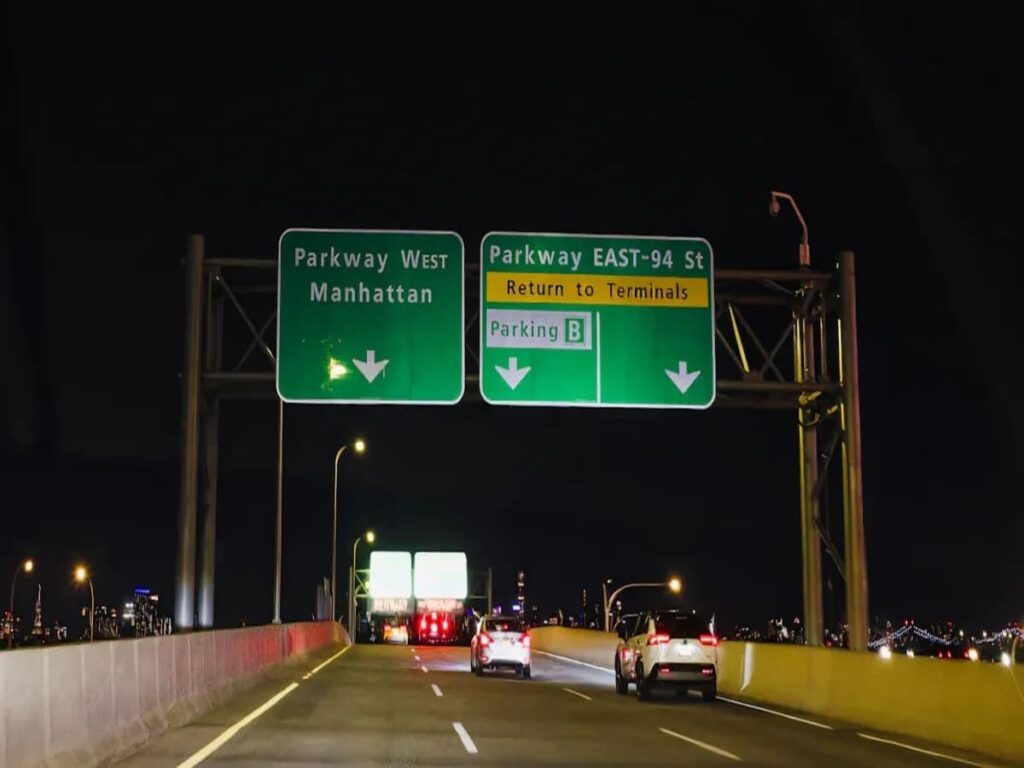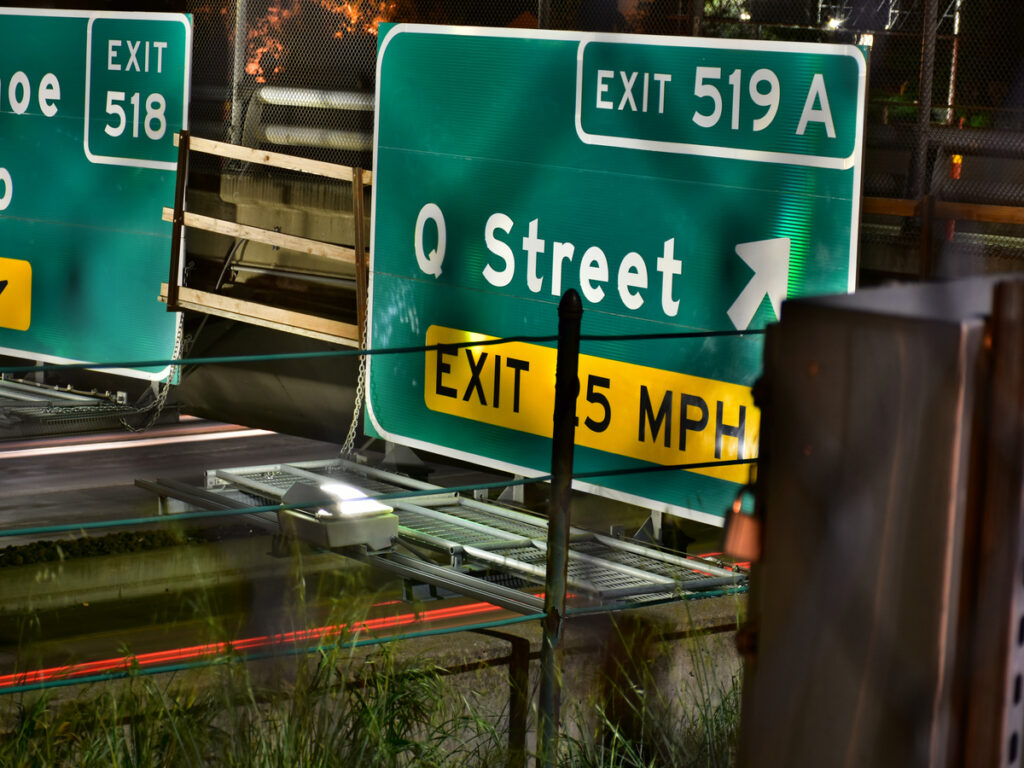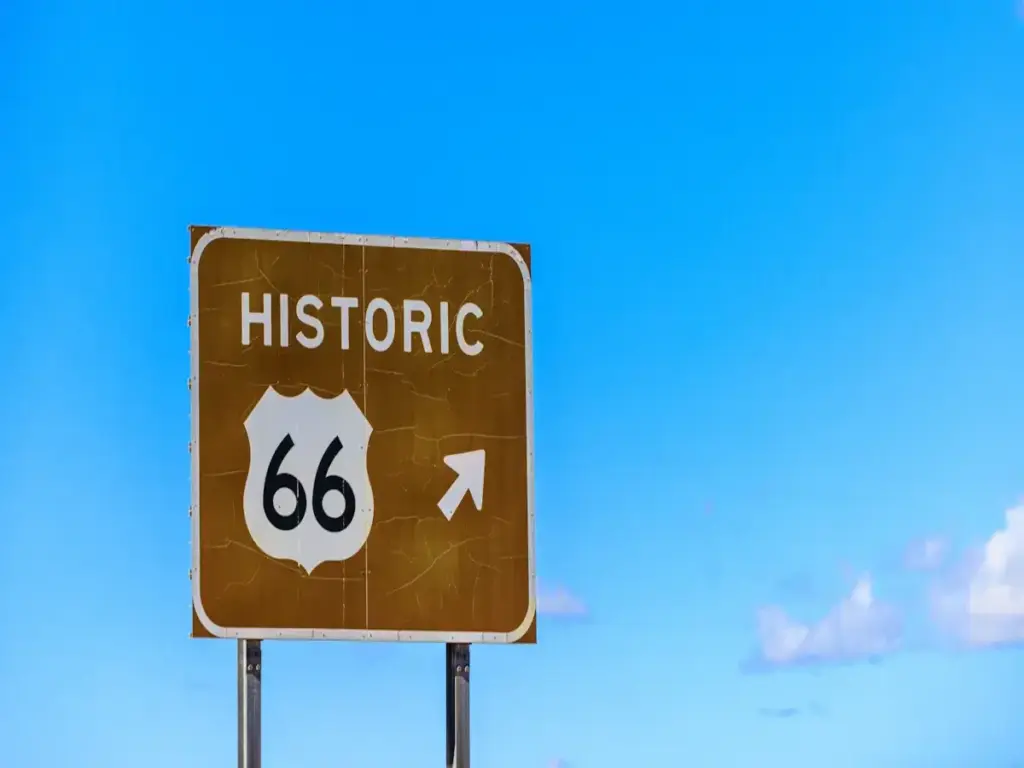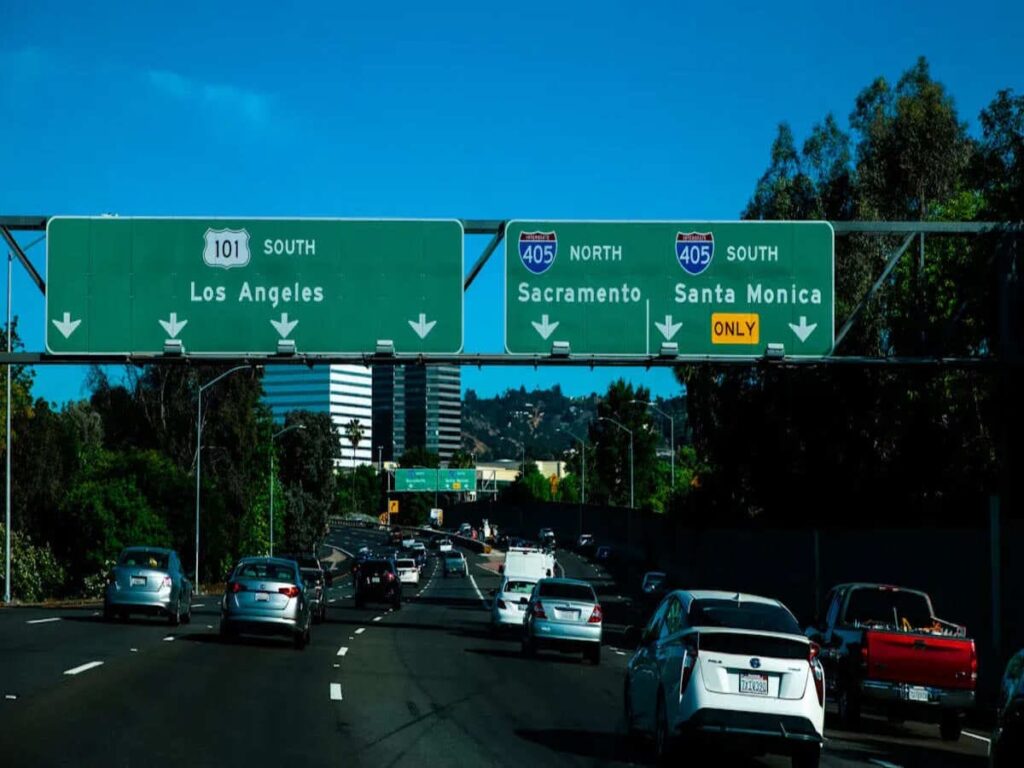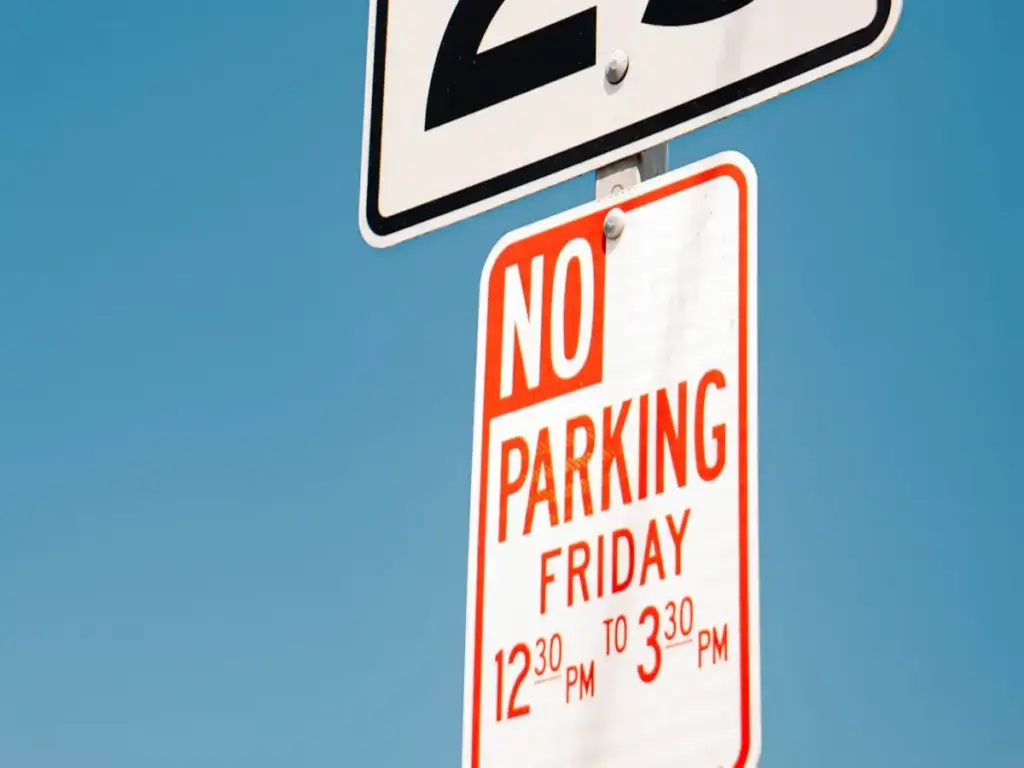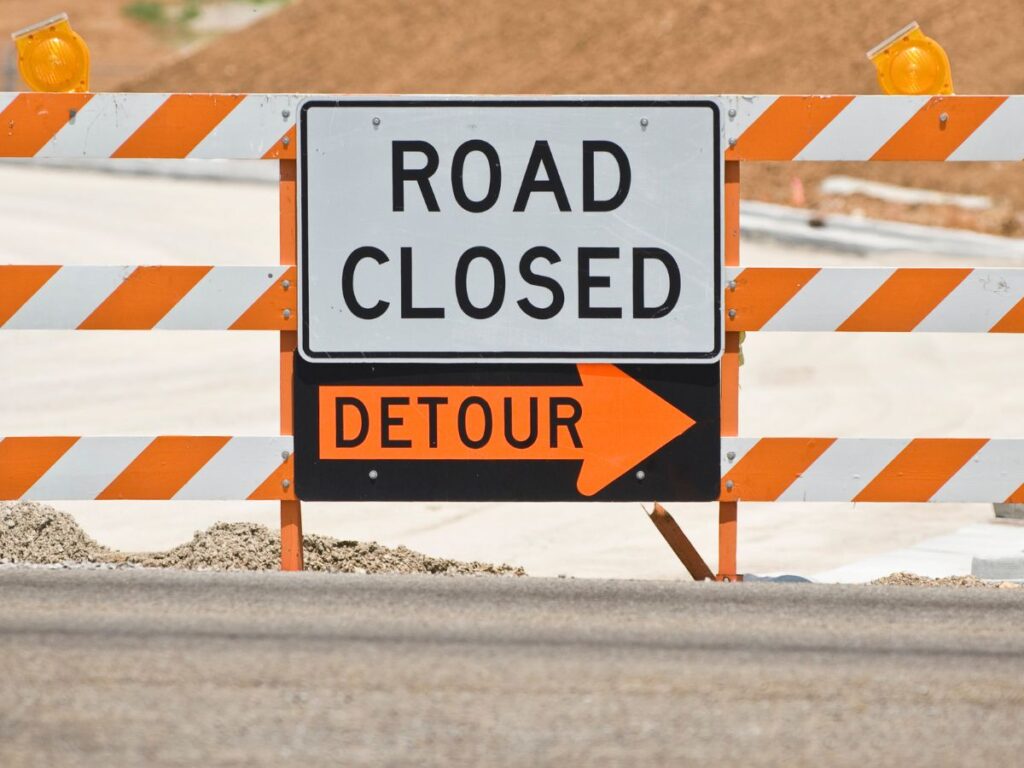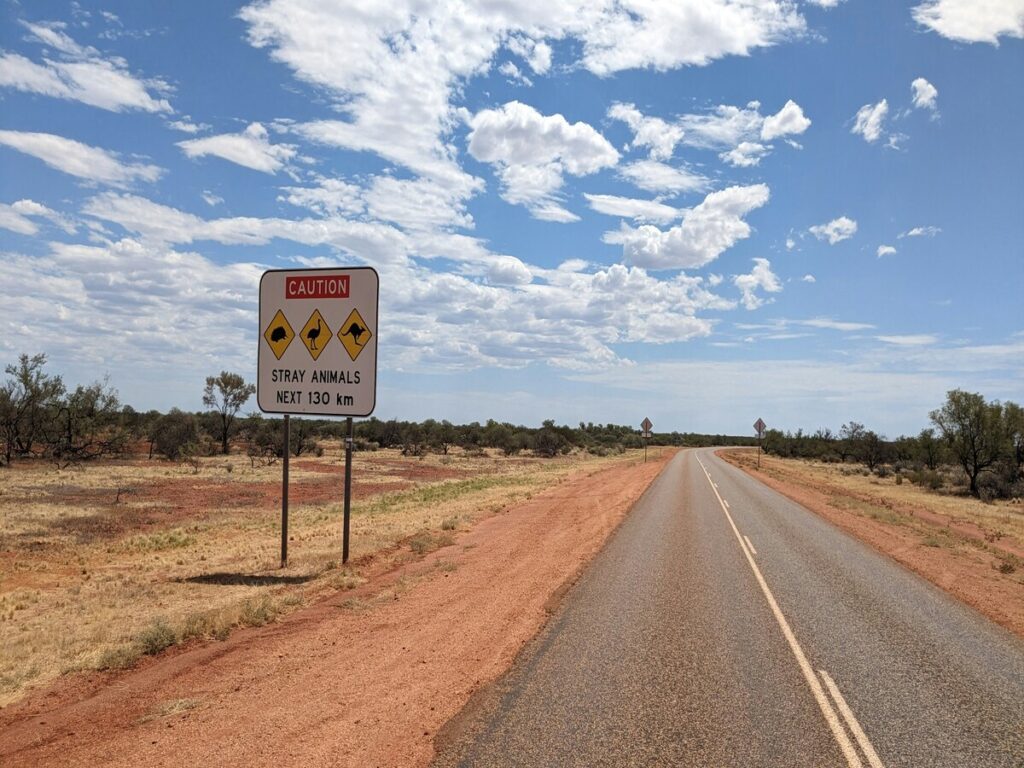
Scegliere la giusta dimensione del segno sulle strade in Australia mantengono le persone al sicuro. Aiuta i conducenti a vedere chiaramente i messaggi importanti. Primo, verificare se la strada è un'autostrada o una strada urbana. Ciò cambia la grandezza dei segnali affinché i conducenti possano vederli. L'Australia ha regole severe per la segnaletica come la segnaletica autostradale. Questi includono AS 1742, COME 1743, e AS/NZS 1906.1. Queste regole dicono quali materiali, riflettività, e le dimensioni da utilizzare. Limiti di velocità, flusso del traffico, e anche il posizionamento del cartello è importante quando si sceglie la dimensione del cartello. Il rispetto di queste regole mantiene le strade sicure. Ti assicura inoltre di seguire la legge in Australia.
Mancia: Il più piccolo segnale di stop sulle strade pubbliche in Australia è 750 mm. Le autostrade spesso necessitano di segnali più grandi in modo che gli automobilisti possano vederli meglio.
| Standard | Requisiti chiave | Note |
|---|---|---|
| COME 1742 | Indica la dimensione dei segnali per ciascuna strada e velocità. Indica quali forme e colori utilizzare. Devi seguire la legge. | Le dimensioni sono diverse per le strade urbane e autostradali. Sono previste dimensioni minime per le strade pubbliche. |
| COME 1743 | Indica quali materiali utilizzare e quanto tempo dovrebbero durare i segnali. | Le basi in alluminio o acciaio sono comuni sulle strade australiane. |
| AS/NZS 1906.1 | Indica quale tipo di pellicola riflettente utilizzare per la segnaletica. | Classe 1 la segnaletica riflettente è necessaria per le strade pubbliche e le autostrade. |
Tipi di strade e segnali autostradali
Fattori di visibilità e velocità
È necessario scegliere la dimensione giusta per i segnali autostradali e stradali in Australia perché i conducenti viaggiano a velocità diverse su percorsi diversi. Sulle autostrade, i veicoli spesso si muovono sopra 90 km/h. Nelle aree urbane, le velocità di solito rimangono intermedie 14 km/h e 40 km/h. Quando guidi più veloce, hai meno tempo per leggere i segnali. Ciò significa che i segnali autostradali devono essere molto più grandi di quelli utilizzati negli ambienti urbani. I segnali più grandi ti aiutano a vedere le informazioni importanti da una distanza maggiore, dandoti più tempo per reagire.
Le linee guida australiane raccomandano che l'altezza delle lettere sui segnali stradali sia almeno pari a 200 mm. Ciò ti consente di leggere il segno dall'alto 200 metri di distanza. Su strade urbane, l'altezza delle lettere può essere inferiore, circa 100-120 mm, perché guidi più lentamente e puoi vedere i segnali da una distanza più breve. IL COME 1742 standard suggerisce di utilizzare 1 millimetro di altezza delle lettere per ogni metro di distanza di visione. Questa regola ti aiuta ad abbinare le dimensioni dei segnali alla velocità e al layout della strada.
A Optraffic, seguiamo attentamente questi standard per garantire la nostra segnaletica autostradale in vendita soddisfare sia le esigenze di visibilità che la conformità normativa in tutti gli ambienti stradali australiani.
Ambienti urbani e autostradali
Le strade urbane e le autostrade in Australia hanno esigenze diverse in termini di segnaletica. Sui percorsi urbani, spesso vedi segnali stradali più piccoli e segnali stradali. Questi segnali ti guidano attraverso strade trafficate, zone scolastiche, e attraversamenti pedonali. Non hai bisogno di segnali grandi perché guidi lentamente e ti fermi spesso. Al contrario, i segnali autostradali devono essere molto più grandi. Le autostrade hanno meno fermate e velocità più elevate, quindi è necessario individuare tempestivamente i segnali stradali e i segnali di avvertimento stradali.
Adattare le dimensioni del cartello all'ambiente ti mantiene al sicuro e segue gli standard australiani. Se usi piccoli segnali su un'autostrada, i conducenti potrebbero perdere avvisi o indicazioni. Controlla sempre il tipo di strada prima di scegliere le dimensioni dei segnali per il tuo progetto.
Standard australiani per la segnaletica normativa
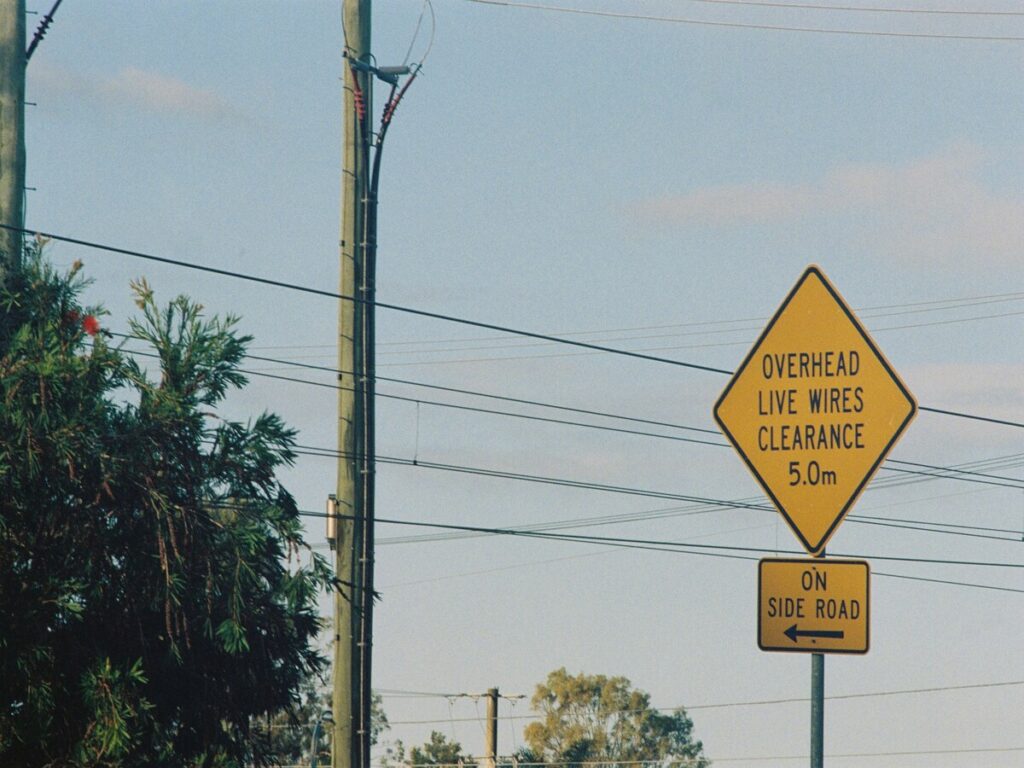
COME 1742 e AS/NZS 1906.1 Panoramica
È necessario seguire regole rigide quando si scelgono i segnali normativi in Australia. Queste regole ti aiutano a mantenere le strade sicure e ad assicurarti che tutti le comprendano. Tre standard principali ti guidano:
| Standard | Area di messa a fuoco | Dettagli |
|---|---|---|
| COME 1742.1-2014 | Dimensioni e tipi di segni | Elenca le dimensioni dei segni (Aa a d) e fornisce misurazioni esatte per ciascun tipo. Si riferisce ad AS 1743 per maggiori dettagli. |
| COME 1743 | Progettazione e costruzione | Spiega come costruire sia la segnaletica temporanea che quella standard. Fornisce dettagli tecnici di progettazione. |
| AS/NZS 1906.1 | Riflettività | Ti dice quale rivestimento retroriflettente usare. Spiega come scegliere la classe giusta per ciascun segno. |
Vedrai che AS 1742 stabilisce le tipologie e le dimensioni della segnaletica regolamentare. COME 1743 ti dà i dettagli tecnici per costruirli. AS/NZS 1906.1 ti parla della riflettività, che aiuta i conducenti a vedere i segnali di notte o in caso di maltempo. Alcuni segnali normativi necessitano di speciali sfondi fluorescenti, come il giallo-verde o l'arancione, per distinguersi ancora di più. Per capire come interagiscono questi standard, soprattutto quando si tratta di scegliere la dimensione giusta per ogni ambiente stradale, leggi il nostro blog Comprensione delle dimensioni dei segni regolamentari sotto AS 1742 Norme per una ripartizione chiara.
Requisiti legali in Australia
In Australia, è necessario seguire questi standard quando si installano i segnali normativi. Le regole assicurano che ogni segnale sia facile da vedere e leggere. Se non si utilizza la giusta dimensione o riflettività, rischi di infrangere la legge e rendere le strade insicure. Puoi trovare le tabelle delle taglie ufficiali per la segnaletica normativa in AS 1742.4. IL Linee guida sulla zonizzazione della velocità del NSW mostra anche le dimensioni consigliate sulle pagine 32 E 33. Controlla sempre la versione più recente di ogni standard prima di iniziare il tuo progetto. Le regole potrebbero cambiare, quindi devi rimanere aggiornato per mantenere i tuoi segnali legali e sicuri.
Mancia: Utilizzare sempre lo standard corretto per ciascun tipo di segnaletica normativa. Questo ti aiuta a rispettare le regole stradali e a garantire la sicurezza di tutti sulle strade australiane.
Fattori chiave nella scelta della dimensione del cartello
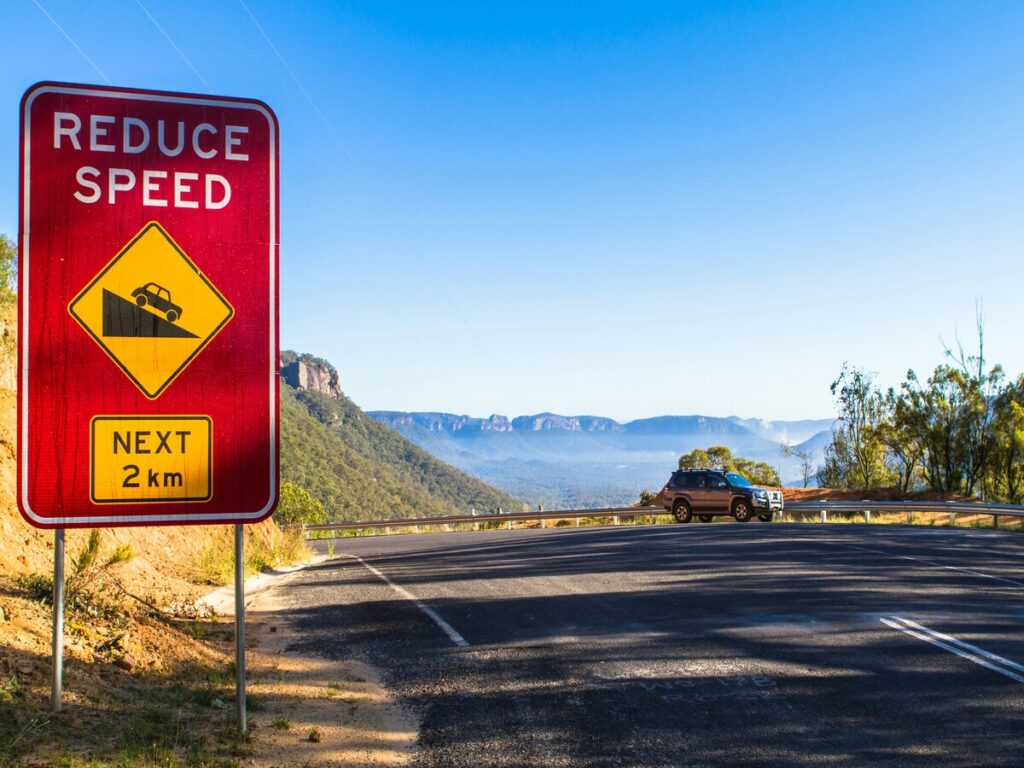
Zone di velocità e leggibilità
È necessario che le dimensioni dei segnali stradali corrispondano sempre alla zona di velocità della strada. Quando guidi su un'autostrada in Australia, viaggi molto più velocemente che su una strada urbana. Velocità più elevate significano che sono necessari più tempo e distanza per leggere e reagire ai segnali. Per esempio, I segnali autostradali spesso utilizzano lettere e simboli grandi. Puoi vederli da molto lontano, anche quando ti muovi velocemente. Su un'autostrada con limite di velocità di 100 km/h, potresti vedere un cartello che misura 1200 × 1800 mm. Questa dimensione ti aiuta a individuare informazioni importanti, come un avviso o una direzione del percorso, prima di raggiungerlo.
Le strade urbane hanno limiti di velocità più bassi. Di solito guidi a 50 O 60 km/h. Qui, non servono cartelli molto grandi. Potrebbe essere un tipico segnale urbano 600 × 600 mm o 750 × 900 mm. Queste dimensioni funzionano bene perché guidi lentamente e hai più tempo per guardare il cartello. Gli standard australiani consigliano l'uso 1 mm di altezza delle lettere per ogni metro di distanza di visione. Questa regola ti aiuta a scegliere la dimensione giusta per ogni strada.
Mancia: Controlla sempre la zona di velocità prima di scegliere la dimensione del segnale. Più grande non è sempre meglio. La giusta dimensione mantiene il messaggio chiaro e facile da leggere.
Posizionamento e tracciato stradale
Il luogo in cui posizionate i segnali stradali conta tanto quanto la loro dimensione. Devi pensare a quanto in alto monti il cartello e quanto è vicino alla strada. Su un'autostrada impegnata, spesso si vedono segnali montati più in alto in modo che camion e veicoli di grandi dimensioni non li blocchino. È inoltre necessario assicurarsi che i conducenti in tutte le corsie possano vedere il segnale. Se hai una strada larga o più corsie, potresti aver bisogno di segni più grandi o extra.
Nelle aree urbane, lo spazio può essere stretto. Potresti avere alberi, auto parcheggiate, o edifici vicini alla strada. È necessario posizionare i segnali dove nulla blocca la vista. A volte, usi segni più piccoli per adattarli allo spazio, ma devi comunque seguire le regole sulla dimensione minima previste dagli standard australiani. Controlla sempre che ci siano i conducenti nelle auto, autobus, e i camion possono vedere chiaramente il segnale.
| Tipo di strada | Dimensione del segno tipico (mm) | Altezza di montaggio (M) | Note |
|---|---|---|---|
| Urbano | 600 × 600, 750 × 900 | 2.0 - 2.5 | Buono per le zone scolastiche, parcheggio, attraversamenti |
| Autostrada | 1200 × 1800 e su | 2.5 - 3.0 | Necessario per alte velocità e strade larghe |
Devi anche pensare al volume del traffico. Le strade trafficate necessitano di segnali più grandi in modo che più persone possano vederli contemporaneamente. Se hai un percorso con molti camion o autobus, utilizzare segnali più grandi e montarli più in alto. Questo aiuta tutti a vedere il messaggio, non importa quale veicolo guidano.
Nota: Controlla sempre la presenza di ostacoli come alberi o segnali provenienti da altre strade. Le linee di vista chiare mantengono tutti al sicuro.
Processo di selezione dei segni in Australia
Guida passo-passo
Scegliere la dimensione giusta per i segnali stradali in Australia aiuta a mantenere tutti al sicuro. Devi seguire un processo chiaro per assicurarti che i tuoi segnali rispettino le regole e funzionino bene per i conducenti. Ecco una semplice guida che puoi utilizzare per qualsiasi progetto:
- Identificare il tipo di strada
Primo, verificare se la strada è un'autostrada o una strada urbana. Le autostrade in Australia necessitano di segnali più grandi perché i veicoli si muovono più velocemente. Le strade urbane spesso utilizzano segnali più piccoli poiché gli automobilisti viaggiano a velocità inferiori. - Controlla la zona di velocità
Guarda il limite di velocità per la strada. Le zone a velocità più elevata necessitano di segnali più grandi in modo che i conducenti possano vederli da molto lontano. Per esempio, UN 100 km/h l'autostrada utilizza spesso un segnale che lo è 1200 × 1800 mm. UN 50 km/h la strada urbana potrebbe utilizzare a 600 × 600 segno mm. - Seleziona il tipo di segno
Decidi se hai bisogno di una regolamentazione, avvertimento, o segno direzionale. Ogni tipo ha le proprie regole sulle dimensioni in Australia. Segni normativi, Come i limiti di velocità, devono seguire standard rigorosi. Segnali di avvertimento, come quelli per le curve strette, devono essere facili da leggere a distanza. I segnali direzionali spesso devono essere più grandi per contenere più informazioni. - Controllare il posizionamento e l'altezza di montaggio
Assicurati di posizionare il segnale in modo che i conducenti possano vederlo chiaramente. Sulle autostrade, montare i segnali più in alto per stare sopra camion e autobus. Nelle aree urbane, controllare la presenza di alberi, auto parcheggiate, o edifici che potrebbero bloccare la vista. - Fare riferimento agli standard australiani
Utilizzare sempre la versione più recente di AS 1742, COME 1743, e AS/NZS 1906.1. Questi standard ti dicono la taglia corretta, materiale, e riflettività per ciascun segno. Puoi trovare le tabelle delle taglie in questi documenti. - Rivedere il tracciato stradale
Guarda il numero di corsie e la larghezza della strada. Le strade larghe o a più corsie potrebbero richiedere segnali più grandi o aggiuntivi in modo che tutti i conducenti possano vederli. - Documenta le tue scelte
Annotare le dimensioni del cartello, codici, e gli standard che hai utilizzato. Ciò ti aiuta a dimostrare la conformità e semplifica i controlli futuri.
Mancia: Controlla sempre le tue scelte con gli standard ufficiali prima di ordinare o installare qualsiasi segnaletica.
Tabella di esempio: Selezione delle dimensioni del segno
| Tipo di strada | Zona di velocità (km/h) | Tipo di segno | Dimensioni tipiche (mm) | Riferimento standard |
|---|---|---|---|---|
| Urbano | 50 | Normativo | 600 × 600 | COME 1742.2 |
| Urbano | 60 | Avvertimento | 750 × 900 | COME 1742.2 |
| Autostrada | 100 | Normativo | 1200 × 1800 | COME 1742.2 |
| Autostrada | 110 | Direzionale | 1500 × 2400 | COME 1742.15 |
Errori comuni
Puoi evitare molti problemi conoscendo gli errori più comuni nella selezione dei segni. Ecco alcuni errori a cui dovresti prestare attenzione:
- Utilizzo della segnaletica su scala urbana sulle autostrade
Se usi piccoli segnali destinati alle strade urbane su un'autostrada, gli autisti potrebbero non vederli in tempo. Ciò può causare confusione o incidenti. - Ignorare le condizioni a più corsie
Le strade larghe con più corsie necessitano di segnali più grandi o aggiuntivi. Se lo dimentichi, i conducenti nelle corsie esterne potrebbero perdere messaggi importanti. - Saltare gli aggiornamenti delle dimensioni dopo gli aggiornamenti stradali
Quando una strada cambia da urbana ad autostradale, è necessario aggiornare le dimensioni del segnale. Mantenersi vecchi, i piccoli segnali non soddisfano gli standard australiani. - Non controllare gli ostacoli
Alberi, poli, o i veicoli parcheggiati possono bloccare la segnaletica. Controllare sempre l'area prima di installare nuovi segnali. - Mancano gli standard più recenti
Gli standard possono cambiare. Se usi vecchie tabelle o guide, i tuoi segnali potrebbero non essere conformi alla legge australiana.
Nota: Un'attenta pianificazione e controlli regolari ti aiutano a evitare questi errori e a mantenere sicura ogni strada.
Conformità e sicurezza
Considerazioni legali e di sicurezza
È necessario seguire sempre gli standard australiani per le dimensioni dei segnali. Queste regole aiutano a mantenere le strade sicure per tutti. Quando i cartelli hanno le dimensioni giuste, i conducenti possono vederli rapidamente. Questo aiuta a fermare gli incidenti e protegge le persone.
- La giusta dimensione del segnale rende i segnali più facili da vedere.
- Gli automobilisti notano più velocemente i pericoli o i cambiamenti sulla strada.
- Si verificano meno incidenti quando i segnali sono chiari e facili da individuare.
- Gli standard aiutano i segnali a durare più a lungo e a funzionare in qualsiasi condizione atmosferica.
- I segnali certificati hanno etichette che mostrano che seguono le regole.
Seguire queste regole aiuta a mantenere le strade sicure. Ti protegge anche da problemi legali se qualcosa va storto.
Mancia: Verificare sempre la presenza di etichette di conformità sui segnali. Queste etichette mostrano che il segnale è conforme agli standard australiani e funzionerà bene sulla strada.
Documentazione del progetto
Dovresti creare tabelle chiare delle dimensioni dei segnali per ogni progetto. Queste tabelle mostrano che i tuoi segnali seguono gli standard giusti. Aiutano anche gli altri a controllare facilmente il tuo lavoro.
Dovrebbe avere una buona tabella delle dimensioni del segno:
- Codice e descrizione del segno
- Riferimento normativo (come come 1742 o come 1743)
- Dimensioni e materiale
- Tipo di strada e zona di velocità
Puoi utilizzare modelli già pronti per risparmiare tempo ed evitare errori. Molte risorse tecniche e modelli sono disponibili per i progetti in Australia. Questi strumenti ti aiutano a stare al passo con gli standard più recenti e a mantenere in ordine i tuoi documenti.
Nota: Usare i modelli e le guide giusti semplifica il tuo lavoro. Ti aiuta anche a rispettare tutte le norme per la sicurezza stradale in Australia.
Per scegliere la giusta dimensione del segnale stradale per qualsiasi strada in Australia, devi fare alcune cose. Primo, guarda che tipo di strada è e quanto vanno veloci le auto. Prossimo, pensa a quanto è facile vedere il cartello e che tempo fa. Utilizzare sempre i più recenti standard australiani per la segnaletica. Assicurati di scegliere materiali riflettenti e che durino a lungo. Aggiorna le tabelle delle dimensioni dei segnali quando la strada o il traffico cambiano.
| Aspetto chiave dell'aggiornamento | Impatto sulla segnaletica e sulla sicurezza stradale |
|---|---|
| Standard di riflettività | Rende i segnali più facili da vedere di notte e durano più a lungo. |
| Design coerente | Aiuta tutti i segnali a rimanere chiari e facili da leggere. |
Imparare nuove regole spesso ti aiuta a rispettare la legge e a mantenere tutti al sicuro sulla strada.
Domande frequenti
Qual è la dimensione legale più piccola del segnale di stop in Australia??
È necessario utilizzare un segnale di stop che sia almeno 750 mm di larghezza sulle strade pubbliche. Questa dimensione soddisfa gli standard australiani e aiuta i conducenti a vedere chiaramente il segnale.
Hai bisogno di segnaletica più grande per le autostrade che per le strade urbane??
SÌ. Le autostrade necessitano di segnali più grandi perché i veicoli si muovono più velocemente. I segnali più grandi ti danno più tempo per vedere e comprendere il messaggio.
Dove puoi trovare le tabelle ufficiali delle dimensioni dei cartelli??
Puoi trovare le tabelle ufficiali delle dimensioni dei segnali nell'AS 1742 e come 1743 standard. Questi documenti mostrano le dimensioni corrette per ogni tipo di segnaletica stradale.
Perché la riflettività dei segni è importante??
I segnali riflettenti ti aiutano a vedere i messaggi di notte o in caso di maltempo. Gli standard australiani richiedono determinate classi di riflettività per la sicurezza.
Cosa succede se usi la dimensione sbagliata del cartello??
L'uso della dimensione sbagliata può rendere i segnali difficili da vedere. Ciò potrebbe causare confusione o incidenti. È necessario seguire sempre gli standard per mantenere le strade sicure.

